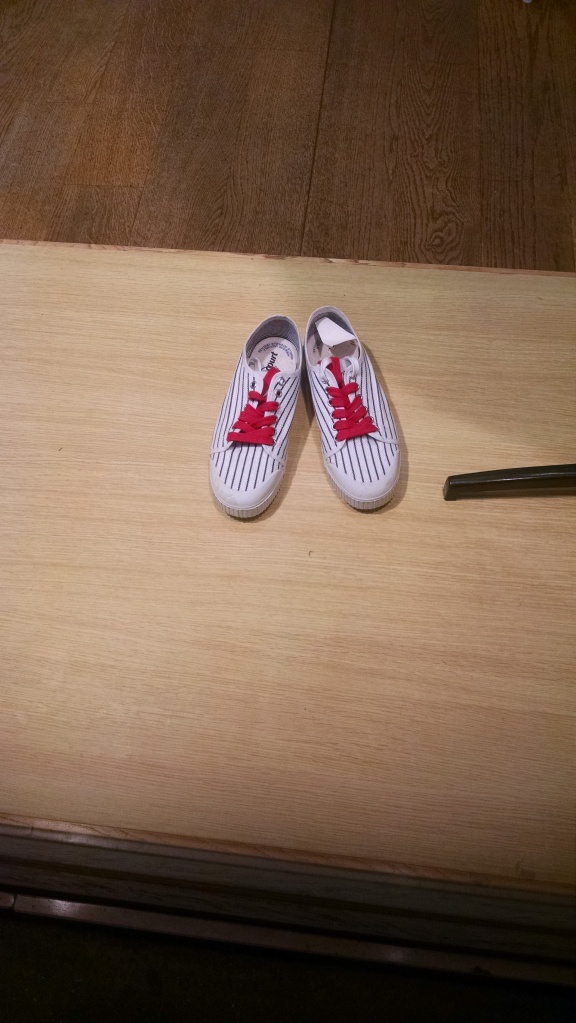By Caitlin Kelly

I’m writing this from a gorgeous hotel in Dublin called The Schoolhouse, which was converted from a red-brick Victorian schoolhouse into a hotel with a small, lovely garden. Jose and I are here for seven nights.
As you can see, we prefer places the Irish would call characterful to the mass-market chains — places that are small, intimate, quirky and historic. We typically rent or borrow an apartment when in Paris or are lucky enough to stay with friends.
Having — so far — been to 39 countries, and often on a tight budget, I’ve learned how to have a great time out there, whether a road trip near home or a long-haul flight away.
Here, a few tips; we have no children, so these are likely most useful for people without them.

What do you want most from your vacation?
I think this question is the single most important of all. If all you really want to do is slarb out, sleep/eat/read/repeat, own it! Nor do you have to head to a beach to enjoy a lazy time of it. It might be a cottage in the woods or a luxury hotel or a rented flat. If your partner/spouse/BFF wants to be up at dawn and hitting all the official sights the second they open, how will that affect your vision of happy time off?
A full, frank discussion before you start booking lodging or travel is a good idea. Few things are more miserable than arriving somewhere with a person, (or a crowd), with wholly different notions of what “holiday” means.

What makes your pulse race?
For me, it’s armloads of natural beauty — so places like the Grand Canyon and Thailand and the coast of British Columbia, not to mention Ireland! — fit the bill perfectly. But I’m also a big city girl, and love to shop, eat, sit in a cafe and people-watch for hours. So my perfect vacation combines both. Your great love might be the craps table or flea markets or museums or a cooking class or…
Fewer/slower beats seeingeverythingallatonce!
I realize that, for many people, a distant journey might truly be once in a lifetime, so the compulsion to try and see and experience everything is a strong one. Resist it!
Our three weeks in Ireland, which is my fifth time here and my husband’s first, has included only two stops, Dublin and Donegal. The Oklahoma couple stepping into our rental car reeled off the list of their destinations and it made me dizzy. I loved getting to know Donegal much better, and doing quick day trips — an hour each way or so — from home base, (a rented cottage), easily allowed for that.

Know/respect your own typical rhythms and those of your travel companion(s)
Few things are as nasty as fighting endlessly on vacation, a limited time as it is, about who’s sleeping in too late, “wasting” hours on a late-afternoon nap or partying too late into the wee hours.
Jose and I often take a “toes up” while traveling to recharge us after a day out before heading out again for dinner. On this trip, we bought a small bottle of gin, cans of tonic water and even a few lemons. Nothing like a shower and a fresh G & T in the room at day’s end! We also bought biscuits, nuts, dried fruit and fresh fruit so we had some healthy snacks waiting for us.
If you long for a lazy lie-in and an hour’s bath, do it! Dragging yourself all over the place to satisfy someone else’s schedule, or your own expectations of doingitallorelse! is no fun.
Pack lightly, and carefully
Especially in Europe and in smaller hotels, (i.e. no bellhops), you’ll be humping your own baggage, whether up and down the London Tube stairs or across a cobble-stoned street. Ireland is known for offering all four seasons every day, even in summer, so I packed light wool cardigans and plenty of over-sized scarves while Jose layered cotton T-shirts beneath his dress shirts. Unless you’re in the wilderness or a very poor country — (both can make great vacations, obviously) — you can likely buy whatever else you need in-country. My bag was six kilos under the allowed weight on the way over to Ireland, and I planned to ditch several books here. I knew I’d also be shopping!

Rest!
It’s tempting to spend your precious vacation driving long distances every day and/or racing from one tourist site to the next. I saw a fellow guest here with a very long list in his hand. Sigh. We had only six days in Donegal and a very ambitious list of what we hoped to see. Hah! Instead, we enjoyed lazy mornings and headed out at 11:00 or so for lunch and exploration; daylight til 10:30 pm helped.
But there is much left to see, even in that one county, and we’re already planning a return trip. On our one rainy, cloudy day I read, painted, snoozed.
The whole point of vacation is to restore, refresh and recharge our work-weary souls.
Consider renting a place
We don’t use Air B & B but have rented apartments in Paris and a cottage in Ireland. It’s great to shop local food markets, get to know the local baker/butcher/produce store and see what different products are on offer in the grocery stores.
Washed Roosters?! It’s a potato.
Aubergine = eggplant.
I also like being able to cook breakfast and dinner at home, which is both cheap and healthy; our groceries for a week (in which we also ate out), were 70 euros which bought so much food we took some away with us when we left.
Being able to do loads of laundry, even daily as needed, saves a fortune on hotel laundry costs and allows you to pack much less. (More shopping!)
Leave room for serendipity
Highlight of this trip?
An unplanned exhausting/exhiliarating golf game with two retired schoolteachers on a links course on Cruit Island, (pronounced Crutch); if we’d had a rigidly-planned schedule and insisted on sticking to it, we’d never have had this amazing experience. It was one of the most enjoyable days I’ve ever had on the road: spectacular scenery, 2.5 hours of vigorous/fun exercise, making new friends, experiencing one of the most Irish of sports — links golf, (from an old English word for ridge, hlinc.)
Another night we headed to Dungloe’s Corner Bar, and ended up listening to one of the nation’s top musicians who just happened to be in the bar that night.
In Dublin, where the flea market is held only one day a month, it was the one Sunday we were here. Yay! I scored a gorgeous plum-colored wool sweater (five euros), an antique Rajasthani mirrored bag (10 euros) and a set of five silver-plate forks for five euros.
Make time for yourself, all alone
If you’re dying for a haircut, massage, mani-pedi or some shopping, do it. By yourself. Maybe you’d rather take photos or just sit still and read a book, magazine, email or newspaper. Jose and I already share a small apartment and now both work from from home — so three weeks’ vacation joined at the hip can feel a bit oppressive.
There’s nothing wrong with taking a day or two off from your companion(s) — or vice versa — and coming back with fresh stories and photos to share.
Sit still and just be (there)

In a world of constant connection, turn off your bloody phone!
Ignore email/Twitter/Instagram/your blog.
The only way to truly savor where you are is to be there. To remain fully present. To sit in total silence, whenever possible.
One afternoon, I spread out on the spongy vegetation of Arranmore Island and just napped. I sat on the edge of a cliff and stared at the gulls below me, the waves crashing against the rocks, the bobbing orange lobster-pot markers.
I treasure the combination of a blessedly-emptied mind and eyes filled with beauty.













































